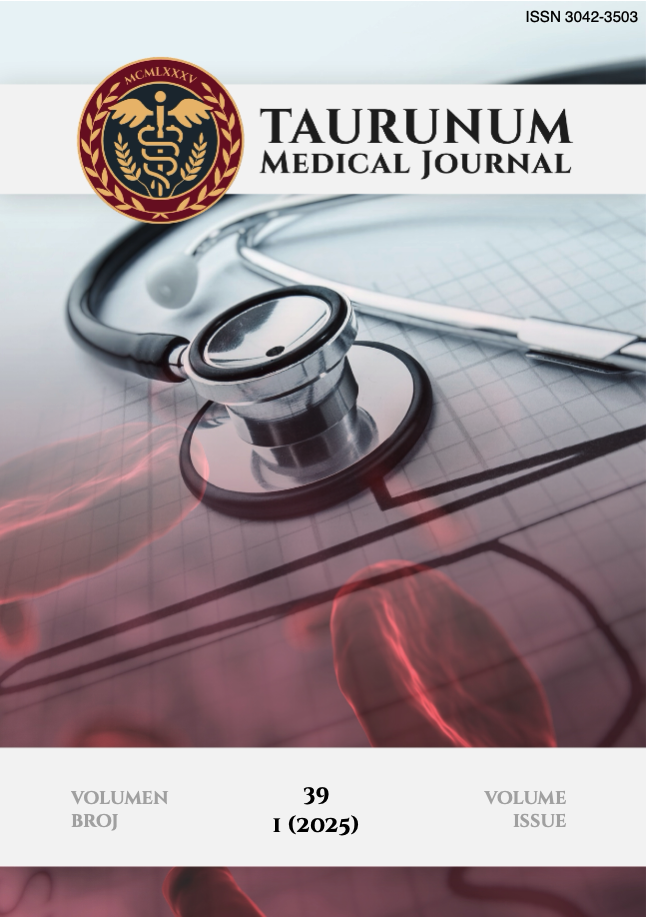Current issue

Volume 39, Issue 1, 2025
Online ISSN: 3042-3511
ISSN: 3042-3503
Volume 39 , Issue 1, (2025)
Published: 31.03.2025.
Open Access
Welcome to Issue 39, No. 1 – the first of our two annual publications for this year. Inside, you'll find a curated selection of articles. Start your year with the essential knowledge and perspectives offered in this timely edition
All issues
Contents
31.03.2025.
Review Article
Adenocarcinoma of the esophagogastric junction presented as a vegetative tumor in the hiatal hernia sac
Introduction: The incidence of esophageal and esophagogastric junction adenocarcinomas has been increasing in developed countries, with primary risk factors including gastroesophageal reflux disease (GERD), smoking, and obesity. Chronic GERD can lead to Barrett’s esophagus (BE), a premalignant condition that elevates the risk for esophageal adenocarcinoma. Case Report: We present a case of a 63-year-old woman with nausea and epigastric pain. Her history was notable for Sjögren’s syndrome and a positive family history of prostate cancer, without smoking or alcohol use. Endoscopy revealed a distal hiatal hernia and long-segment Barrett’s esophagus (LSBE) with a 3 cm ulcerated lesion at the gastroesophageal junction, located within the hernia sac. Biopsies confirmed well-differentiated adenocarcinoma in LSBE. CT imaging showed a tumor extending through the hiatal hernia with distal esophageal wall thickening and lymph node metastases but no distant metastases. The patient underwent a subtotal esophagectomy with lymphadenectomy and esophagogastric anastomosis using the Ivor Lewis procedure. Pathology confirmed adenocarcinoma with lymph node metastasis and a close circumferential resection margin. Six cycles of postoperative chemotherapy with platinum and fluoropyrimidine were administered. The patient was recurrence-free at a three-year follow-up. Conclusion: This case underscores the association between hiatal hernia, Barrett's esophagus, and esophageal adenocarcinoma, particularly in the setting of disrupted antireflux mechanisms. The findings support the importance of early investigation and monitoring in patients with GERD and BE to mitigate cancer progression.
Aleksandar Pavlović, Sara Filipović, Jovana Trifunović, Nemanja Trifunović, Miroslav Kreačić



